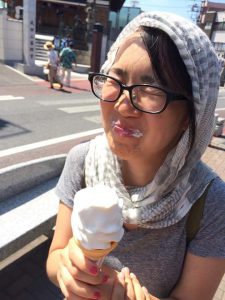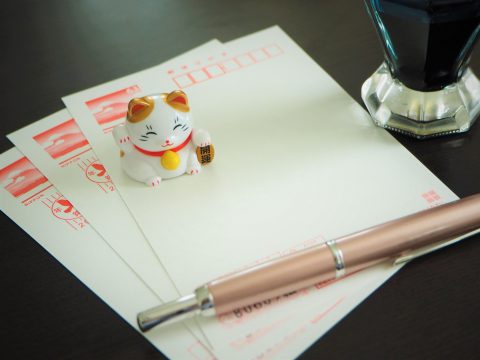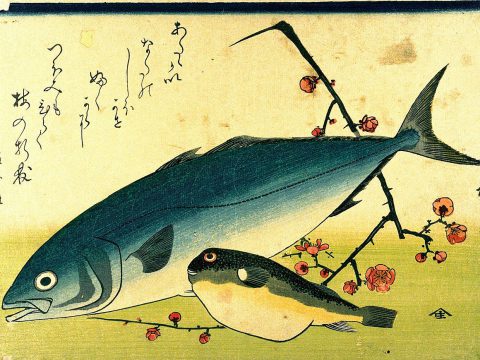Gogatsubyo (五月病)
WORK’IN JAPAN
16.05.2022
Note: this information is not intended or implied to substitute for professional medical advice, diagnosis, or treatment. Please seek professional help if you think you may have seasonal affective disorder/Gogatsubyo
As the new beginnings on April 1st calm down, and you start getting into your new routine as an employee or student refreshed after Golden Week. Suddenly, you start feeling sluggish, tired, and can’t eat or sleep well. Is it the spring weather? Allergies? Mercury in retrograde?
It turns out you may have Gogatsubyo (五月病).

What is Gogatsubyo (五月病)
Gogatsubyo (literally “May sickness”) is not just a Japanese phenomenon but is well-known in Japanese society. It’s not a medically diagnosed sickness per se but refers to seasonal affective disorder.
The stress from the big adjustment such as a new school year, new school, joining the workforce, or transitioning jobs or locations can be tremendous stress for many. The pressure to perform well in a new environment and live up to their colleagues’ expectations and themselves can put one at risk for anxiety disorder.
In addition, there are no national holidays after Golden Week until mid-July. Depending on your workplace, taking paid leave may seem difficult, especially as a new hire. The perspective of no holidays may heighten your stress. Thus, some may lose motivation and feel melancholy after Golden Week.
According to a study about stress conducted in 2018, one in four has experienced gogatsubyo at least once. While not uncommon, it can lead to mild depression or even worse if it’s not appropriately treated.
Signs of Gogatsubyo

Here are some signs of gogatsubyo.
Mental symptoms:
- Sadness, depression
- Anxiety, frustration, tension
- Helplessness, tiredness, lack of motivation
Physical symptoms:
- Loss of appetite, weight loss, vomiting, stomach pain, nausea
- Trouble falling asleep, weakening up early, insomnia
- Palpitations, dizziness, increased blood pressure, heavy sweating
Behavior symptoms:
- Becoming passive, avoiding interaction with people
- Excess drinking and smoking
- Feeling restless, uncomfortable
How to combat Gogatsubyo

Here are some stress busters to combat gogatsubyo.
Acknowledge and manage your stress and anxiety
- Easily said than done, but stress and fatigue management are vital, according to the Osaka Medical Association. Allow yourself some space, and take breaks between your day.
Get exercise
- Go for a light run, jog or walk around your neighborhood. Maybe you’ll notice something new that you haven’t before
- Get on your bike and explore somewhere new.
- Watch and follow exercise videos on YouTube. There is lots of content out there for yoga, pilates, strength training, and more in the comfort of your home.

Reunite with an old hobby or start a new one
- Did you like to knit, bake, draw, work on puzzles, or read? Reunite with an old hobby you used to partake in or find a new hobby!
- These activities release serotonin in the brain, which is responsible for the feelings of well-being and happiness.
Reschedule your daily routine
- It may be hard at first, but try to reschedule your daily routine. This would mean going to sleep and waking up around the same time every day.
- Try to turn off electronics at least an hour before bedtime, as the blue light messes with your body’s ability to sleep.
Make time to reflect on your day
- Regardless of your day’s life, make time to reflect on your day. Perhaps you could journal or meditate.
Seek professional help
- Don’t hesitate to seek help if necessary. While your family and friends may provide you with mental and emotional care, a doctor may be able to direct your stress in the right direction. Whether it be counseling, medication, or a combination of the two, seeking help is not a sign of weakness.


Kayoko Hirata Paku
Kayoko Hirata Paku is a food writer, translator, and bagel person. Growing up in Japan and the U.S., she currently resides in Tokyo with her peanut butter addicted husband, a very hungry baby, and many half-dead plants.
Read previous articles by the writer
Read latest articles
KEYWORDS
- # PICKPICK
- # Resume
- # alcohol
- # Rice
- # Soup
- # winter food
- # Fast Food
- # seafood
- # spicy foods
- # raw food
- # fermented food
- # Transportation
- # MEAT
- # Edo culture
- # suits
- # clothing
- # drink
- # fish
- # seasoning
- # Japanese New Years Foods
- # Toshikoshi soba
- # Osechi Ryori
- # Ozoni
- # Christmas
- # Japanese fusion pasta
- # Wafu Pasta
- # Japanese Hot Pot
- # なべ
- # 鍋
- # Miyazaki
- # Chicken Nanban
- # Karamen
- # Autumn Wagashi
- # Mushi-yokan
- # Imo-yokan
- # Japanese Autumn Fruits
- # Autumn
- # Vending Machine
- # fall
- # dango
- # Chestnut rice
- # saury
- # Mushroom
- # Rice vinegar
- # Japanese condiments
- # 調味料
- # Sake
- # Mirin
- # Soy sauce
- # Japanese Noodles
- # Udon
- # Ramen
- # Yakisoba
- # Soba
- # Japanese Seaweed
- # 海藻
- # かいそう
- # Payslip
- # Training
- # Japanese summer foods
- # 和菓子
- # Wagashi
- # ryokucha
- # 夏
- # 飲み物
- # Ramune
- # ラムネ
- # Pokari Sweat
- # ポカリスエット
- # Calpis
- # カルピス
- # Mugicha
- # ume
- # 梅
- # うめ
- # umeshu
- # job hunting
- # tofu
- # Recruitment in Japan
- # miso
- # Japanese cuisine
- # Yellowtail and bonito
- # Children’s Day
- # Kashiwa Mochi
- # Chimaki
- # fruits
- # Kusamochi
- # Types of Agriculture in Japan
- # bread
- # パン
- # パン屋さん
- # japanese bread
- # shokupan
- # meal blead
- # anko bread
- # 桜
- # さくら
- # cherry blossom
- # visa
- # hanami
- # omotenashi
- # sakura
- # おもてなし
- # Japanese hospitality
- # oshibori
- # wet hand towel
- # hand towel
- # restaurant
- # Commuting in Japan
- # Women-only cars
- # Exit gate
- # japanese train
- # train
- # valentine
- # Japanese sweets
- # 朝食
- # Japanese Breakfast
- # Breakfast
- # Japanese
- # 日本
- # healthy
- # persimmons
- # hoshigaki
- # HR
- # work in Japan
- # jinji ido
- # corporate systems
- # Japanese work culture
- # bento
- # ekiben
- # shinkansen
- # omiyage
- # train station
- # Japanese culture
- # work culture
- # mentaiko
- # umeboshi
- # Japanese snacks
- # potato chips
- # Japanese potato chips
- # Japanese writing
- # seaweed
- # konbu
- # ocean foods
- # shio konbu
- # dashi
- # miso soup
- # food processing
- # pear
- # nashi
- # sweet potato
- # japanese sweet potato
- # stingray
- # satsuma imo
- # food value chain
- # homecooking
- # agriculture
- # Japanese homecooking
- # farming
- # nikujaga
- # shojin ryori
- # meat and potatoes
- # traditional foods
- # comfort food
- # buddhist food
- # manufacturing
- # factory
- # eihire
- # vegetarian
- # food and beverage
- # izakaya
- # yatai
- # japanese festival
- # taiyaki
- # matsuri
- # summer
- # Ikayaki
- # smart agriculture
- # shaved ice
- # kakigori
- # かき氷
- # summer dessert
- # Japan
- # Japanese foods
- # dessert
- # fruit
- # matcha
- # icecream
- # Pikcup
- # Pikc up
- # Pcikup
- # skilled labor visa
- # working visa japan
- # Dineer Table in Japan
- # Japanese manner
- # Japanese food
- # Japanese Table Manner
- # Chopsticks
- # Japanese traffic signs
- # traffic information
- # road rules in Japan
- # chocolate
- # green tea
- # Osaka
- # Work Japan
- # Japanese company
- # ikura
- # sushi
- # nigiri
- # wasabi
- # PCIK
- # PICK UP
- # PICK
- # PICKUP








